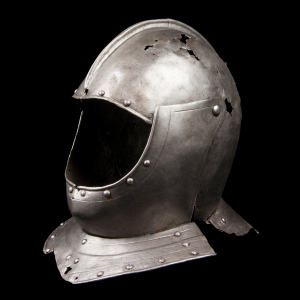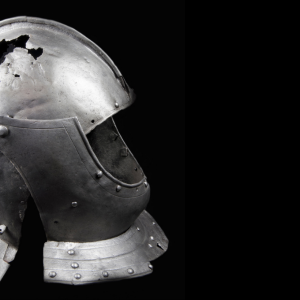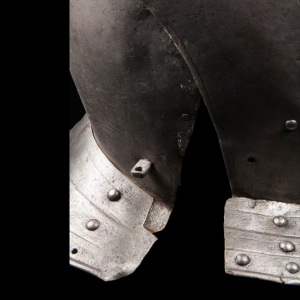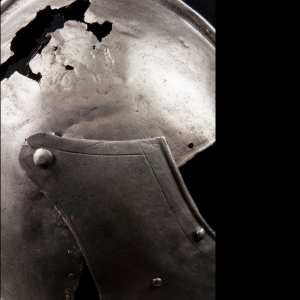Bascinet
Author: Unknown
Origino: Italy
Dating: 15th century
Material: Metal
Dimensions (cm): 31 x 26,8 x 27
Weight: 1190 g
Inv. no.: PD1092
A visor with a gorget – also known as a bascinet – which belonged to a small helm consisting of three hinged iron elements.
The gorget is an armour element that protects the mouth, chin and neck. It protected the exposed area between the breastplate and the helm. It was quite common for the gorget to sustain the weight of a visor, such as in this object.
When attacking a suit of armour, the goal was to aim at the weakest areas in the joints and, as such, the gorget was used so a knight wouldn’t (literally) lose his head.

Did you know… that military saluting emerged in the Middle Ages?!
The exact origins of the ritual is uncertain, but it is believed that it refers to a medieval gesture. According to some historians, when knights met peers, they would raise their visor in a motion similar to saluting. By doing so, knights could identify themselves and approach in safety.
Between the late Middle Ages and the early Modern Age, this greeting was maintained as a means of indicating subordination to the military hierarchy organized within the armies.
And not all Armed Forces have the same way of greeting: some display the palm facing forward (the British, the French and the Pakistani military personnel), others display the palm facing down (i.e. the Brazilian military), others display two fingers (the Polish army) and others use the left hand (if a soldier is amputated, injured or carrying a weapon).







